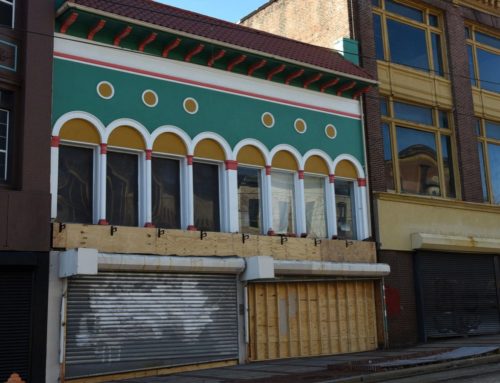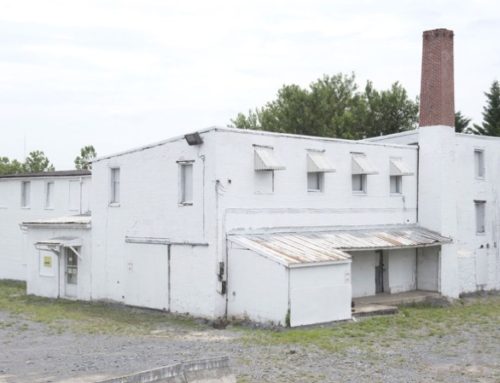The National Register-eligible Georgia Avenue Baptist Church, constructed in 1952, has been added to the Montgomery County Master Plan for Historic Preservation. Photo: Clare Kelly, M-NCPPC.
by Scott Whipple, Supervisor | Historic Preservation Section | Montgomery County Planning Department | M-NCPPC
The Montgomery County Council on November 5, 2013 designated the Georgia Avenue Baptist Church, a midcentury modern landmark in Wheaton, adding the church to the county’s Master Plan for Historic Preservation. The National Register-eligible church was constructed in 1956 to the design of architect Theodore Bennett, with an education building by Vosbeck-Ward Associates added in 1962. The church addresses Georgia Avenue with a gablefront façade that is split symmetrically: the southern (right) half is lightened by a wall of glass extending from ground to eave and wrapping around the south corner to the southeast façade, while the northern (left) half of the gablefront is of brick siding. A deep limestone pier, extending from ground to gable peak, splits the two halves. The education building is notable for its use of TECFAB panels, prefabricated concrete panels with, in this case, an exposed aggregate of blue, tan, and light gray stones. The TECFAB Company, born from a partnership between businessman Harry Berliner and architect Charles Goodman, manufactured its panels in a Beltsville, Maryland, factory.
The church’s congregation was very involved in the design of the church, working closely with the architect to influence his plans in accordance with their vision for the church. That same spirit of involvement remains today, as congregants played an active role in support of the church’s nomination during the designation process.
The Montgomery County Planning Department’s historic preservation section has launched Montgomery Modern, an initiative to explore, analyze, and record local mid-century modern buildings and communities. As part of this effort, preservation staff is producing educational materials and programming, and working to engage the public in thinking about these buildings and communities that developed during a time of tremendous growth in Montgomery County.




